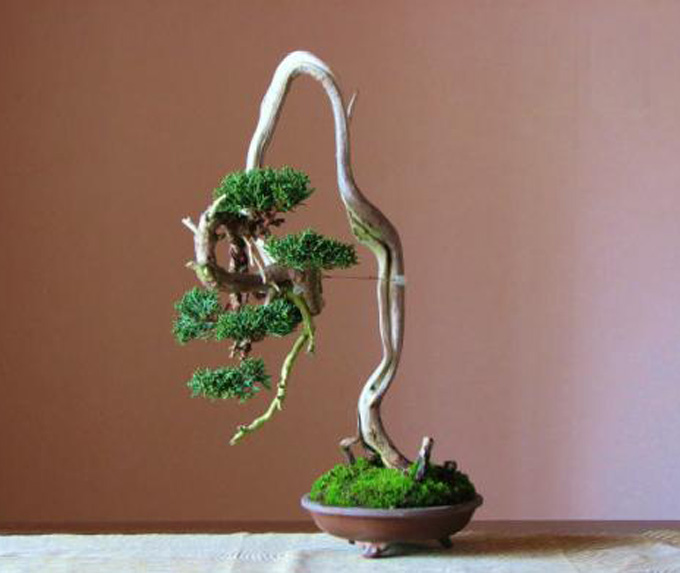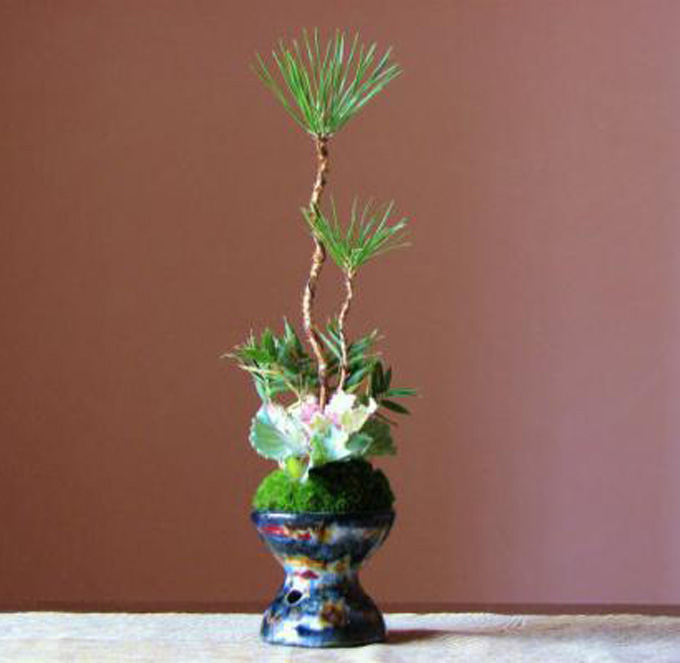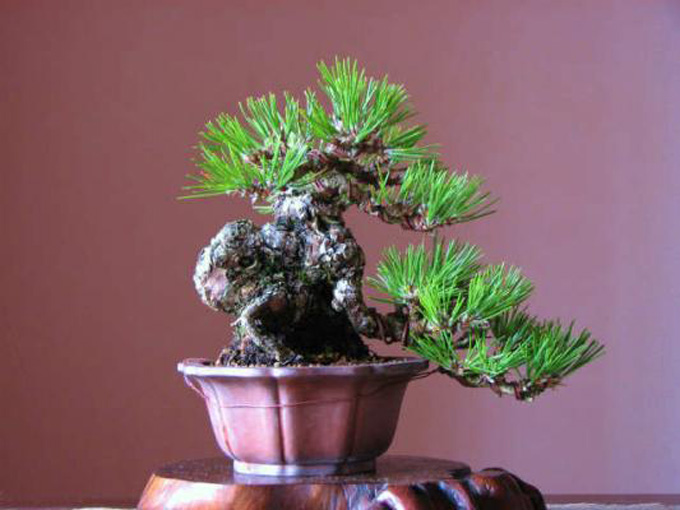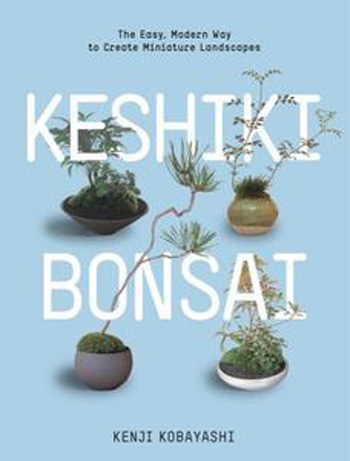 Shohin bunjin? This little Shimpaku looks a lot like a bunjin bonsai, even though it may not fully reflect all the qualities, particularly age, that we associate with larger bunjin trees (the comments on this post may help shed a little light). Also, I wonder about the puffy little foliage pads. Still, in shape at least, I’d say there’s something bunjin about it. No matter, it’s an eye catcher that most of us would be happy to see sitting on our bonsai bench. Like the little trees in our last post, it’s from Bonsai-Mikunien (The Bonsai and the Moss Ball).
Shohin bunjin? This little Shimpaku looks a lot like a bunjin bonsai, even though it may not fully reflect all the qualities, particularly age, that we associate with larger bunjin trees (the comments on this post may help shed a little light). Also, I wonder about the puffy little foliage pads. Still, in shape at least, I’d say there’s something bunjin about it. No matter, it’s an eye catcher that most of us would be happy to see sitting on our bonsai bench. Like the little trees in our last post, it’s from Bonsai-Mikunien (The Bonsai and the Moss Ball).
An ill advised shortcut. Our last post, Small is Deceptively Good, featured some little trees that we attributed to Michael Bonsai. True, we found them in Michael Bonsai’s facebook photos and we suspected that they are from somewhere else, but we didn’t know where, so we (that’s me) took a shortcut and simply attributed them to Michael. Fortunately, Ryan Bell didn’t waste anytime in setting us straight (it’s all in the comments). BTW, Ryan’s Japanese Bonsai Pots Blog, is a trip well-worth taking (but do come back!).
So now we know. They’re from Bonsai-Mikunien (aka The Bonsai and the Moss Ball). So are the four little trees in this post.
 Keshiki? There’s a new book called Keshiki Bonsai that speaks very clearly to this type planting. You might notice how the movement and some of the color in the provocative little pot is reflected in the planting.
Keshiki? There’s a new book called Keshiki Bonsai that speaks very clearly to this type planting. You might notice how the movement and some of the color in the provocative little pot is reflected in the planting.
 Whoa! It would be all too easy to covet this powerful little tree. But wait, you’d don’t have to covet it, it’s for sale! For 90,000 yen ($1,110.00 give or take). I’m going to guess that it’s a Japanese red pine (Pinus densiflora) given the color. Japanese red pines have two needles per fascicle (bundle). Japanese black pines also have
Whoa! It would be all too easy to covet this powerful little tree. But wait, you’d don’t have to covet it, it’s for sale! For 90,000 yen ($1,110.00 give or take). I’m going to guess that it’s a Japanese red pine (Pinus densiflora) given the color. Japanese red pines have two needles per fascicle (bundle). Japanese black pines also have five needles per fascicle. (Note, see Jose Luis in comments below for the truth of this little tree).
 This sturdy shohin Shimpaku is only 58,000 yen (about $690.00).
This sturdy shohin Shimpaku is only 58,000 yen (about $690.00).
 This sweet, almost revolutionary (there’s a meaningless marketing term for you) new book is available at Stone Lantern. List price is 19.95. Our sale price is only 13.95.
This sweet, almost revolutionary (there’s a meaningless marketing term for you) new book is available at Stone Lantern. List price is 19.95. Our sale price is only 13.95.
“I’m going to guess that it’s a Japanese red pine (Pinus densiflora) given the color. Japanese red pines have two needles per fascicle (bundle). Japanese black pines have five needles per fascicle.”
Wayne,
I am afraid that you are confusing a JBP with a Japanese white pine. Both, Japanese red pine and Japanese black pine are a two needle pine. They sometimes interbreed, producing hybrid Red/Black pines.
Kind regards,
Jose Luis
Wayne,
I visited the site. Hence the writing (??) and as pronounced in Chinese (Hei Song) it is a black pine.
Regards,
Jose Luis
Thanks as always Jose,
A la la ho!! Yes, I knew Black pine is two needle, just had a moment’s lapse (these occur with great frequency, but ‘what me worry?”).
It’s a good thing we have you though, otherwise I might get away with misleading the bonsai masses.
Cheers!
-w
Hi again Jose,
The strange thing is, my name is on our Japanese pine book. This must be age related (always a good excuse).